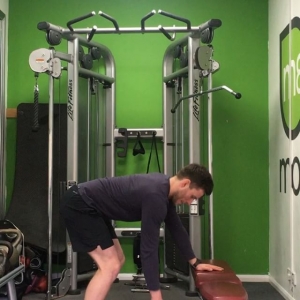Posted on April 11, 2018 by Jenny Cromack
In my personal opinion, but also an opinion that is shared by many practitioners around the world; strength underpins so many sporting and clinical attributes. Anything from the ability to decelerate, change direction and re-accelerate to the overall quality of life, can be affected by strength. That’s why it’s important to include an element of strength training into your routine.
What is Strength?
Maximal strength is ‘the maximum force that a muscle can generate at a specified velocity’. The keys to develop strength are as follows:
– High intensities (>84% 1RM)
– Low volumes (5-8 reps)
– Long inter-set rest (3-5 minutes)
The scientific rationale is to maximise the recruitment of high-threshold motor units. Whatever your goals, it is vital that a baseline strength level is maintained.
Strength Workout

A key performance/quality of life indicator is injury; research suggests that strength training will significantly reduce the likelihood of injury. For this reason, I like to get this (or similar) strength session once or twice a week:
A1) Front Squat × 8 × 4
A2) DB Bench Press × 6 each arm × 4
B1) SL RDL (Barbell) × 6 each leg × 4
B2) Pull-up/Chin × 6-8 × 4
B3) Step-up × 6 each leg × 4
C1) Loaded High Plank × 30s × 3
C2) Farmers walks × 20m each side × 3
C3) Pallof Press × 8 each side × 3
This workout is nice and simple, takes no more the 45 minutes, but is massively important. It targets each of the major muscles groups. Often, during a block of training we like to over complicate things, every now and again it is important to go back to basics and keep our levels of whole body strength high. Little tweaks to this session can be made to keep it fresh and varied – replacing a squat with split squat variations or swapping the bench press for a landmine pressing variation are just some ideas for you…

